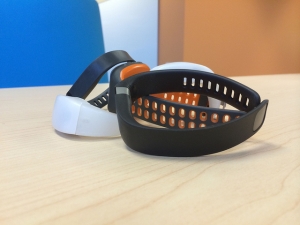
Not just a fashion, wearables making moves into medical, construction industries

Photo by Intel Free Press is licensed under CC BY 2.0
Wearable technology is a significant new trend, and one that is coming on strong. Wearables are being talked about, written about and experimented with in all kinds of ways. What once many thought to be nothing more than a techie fad is now an industry that is experiencing exponential growth.
Wearables are in high demand. Men and women of all ages like the products because they track activities and report data that is important to them. Wearable technology, for instance, can monitor heart rate, body temperature, steps taken, calories consumed, blood pressure and dangerous situations. These devices track a user’s sleep patterns, stress levels and overall wellness and report the results in user-friendly data.
Smart watches are currently the most common devices being used. The wrist bands monitor so many things; doctors now use them to track a patient’s overall well-being in real time over a protracted period of time.
Embedded sensors in wearables not only capture information that doctors need to see, some wearables allow doctors to monitor at-risk patients. Individuals with a high risk of developing deep-vein thrombosis, for example, can wear a watch-type device that monitors how long they have been sitting. If too much time passes without activity, the wearable will vibrate until the person gets up and moves. Wearable technology also allows caregivers to monitor patients with dementia to make sure they’ve taken their medication, eaten at regular times and have not wandered away from their home base.
Industry has also adopted various types of wearables. Most industry devices are designed to keep workers safe. In 2013 alone, OSHA reported that 828 construction workers died on job sites. By leveraging GPS systems, new wearable technology embedded in glasses offers workers a visual display of critical information, including the location of live electrical wires, vehicle and machinery locations and the presence of harmful materials.
Wearables include smart clothing which is designed for medical patients and utility workers. Clothing sensors track movement and help doctors implement targeted treatment options. Smart clothing can also monitor posture, vibrate if a worker tries to lift machinery that is too heavy or if an individual is close to a dangerous object.
It’s definitely a changing world and wearable technology as it evolves and morphs is definitely destined to change the way Americans live, work and stay healthy.
Innovations in technology, government and industry are hard to keep up with, but it’s important to do so. Let Strategic Partnerships help you stay up with the latest trends in both government and tech.
